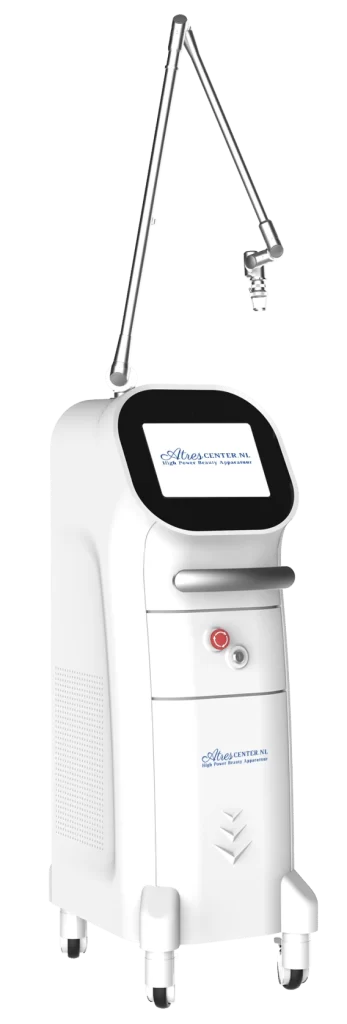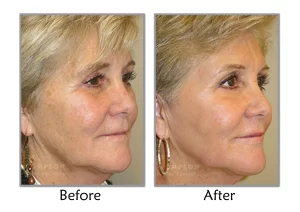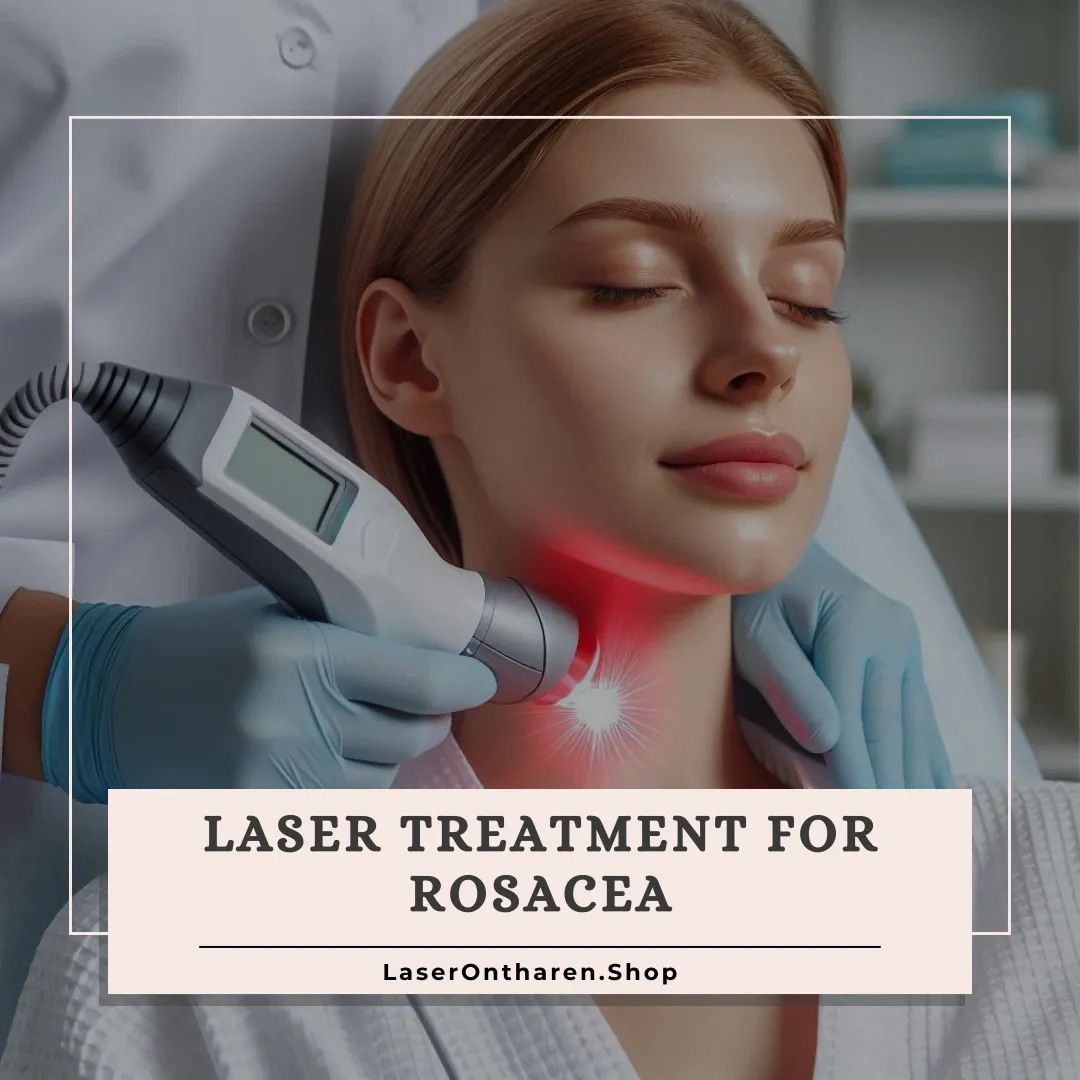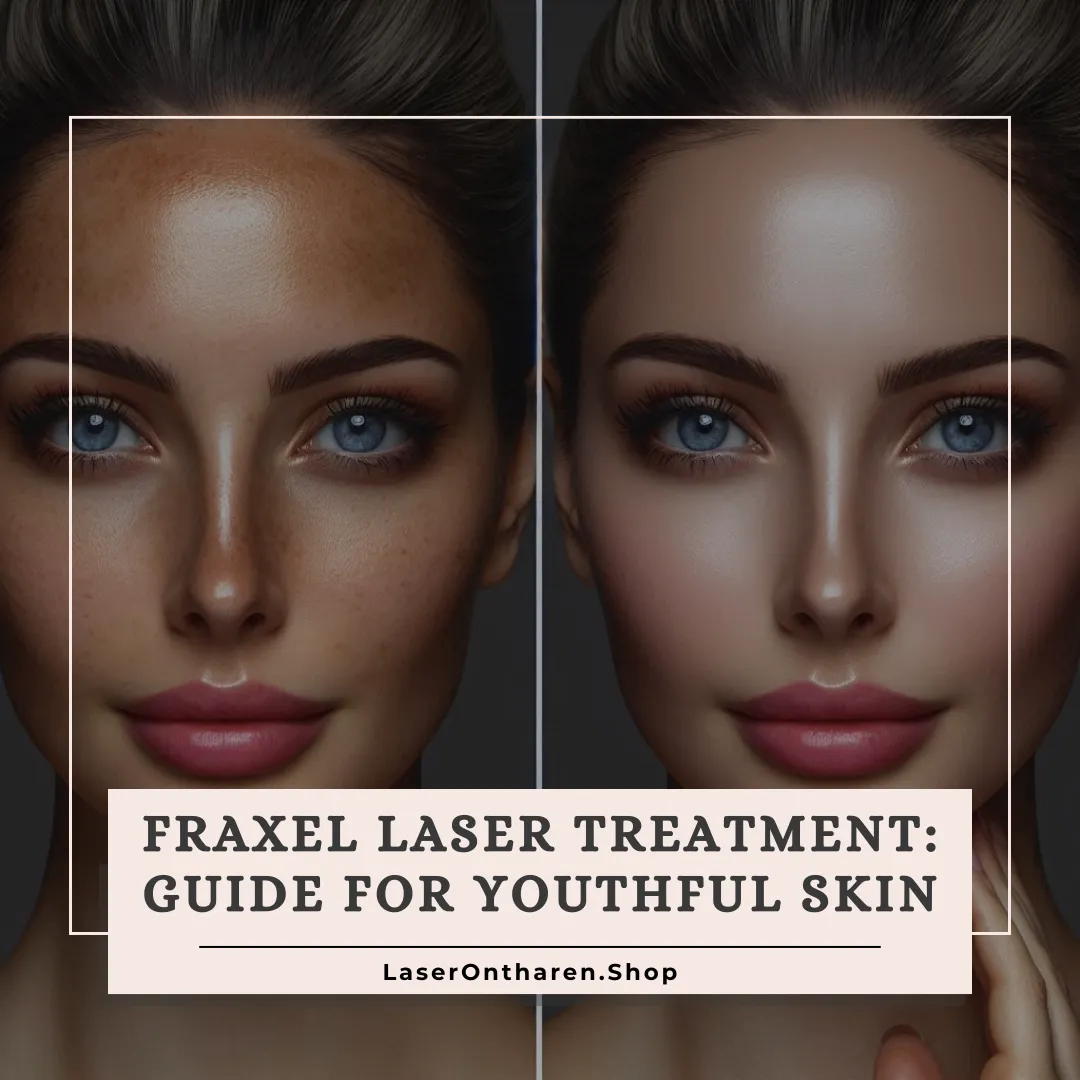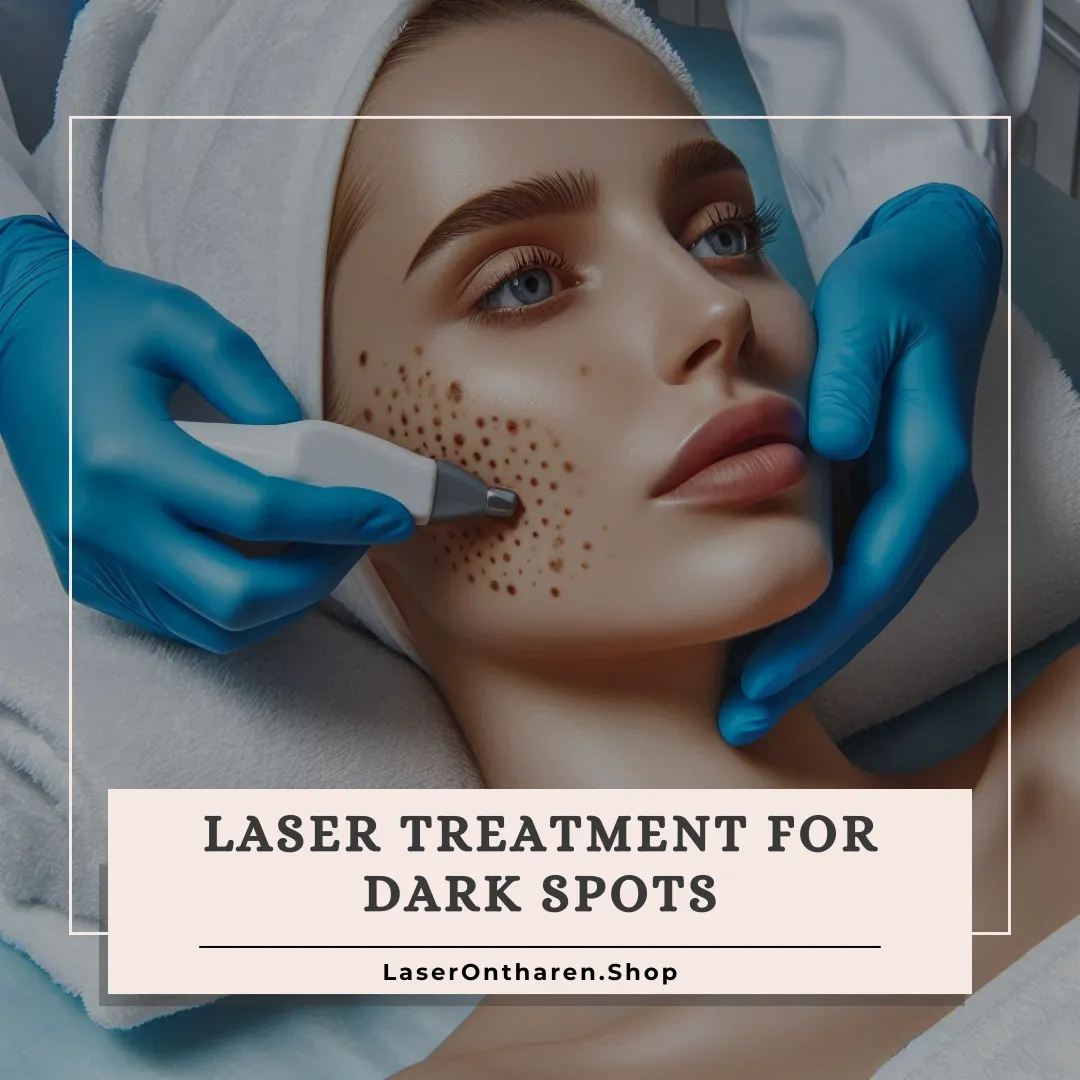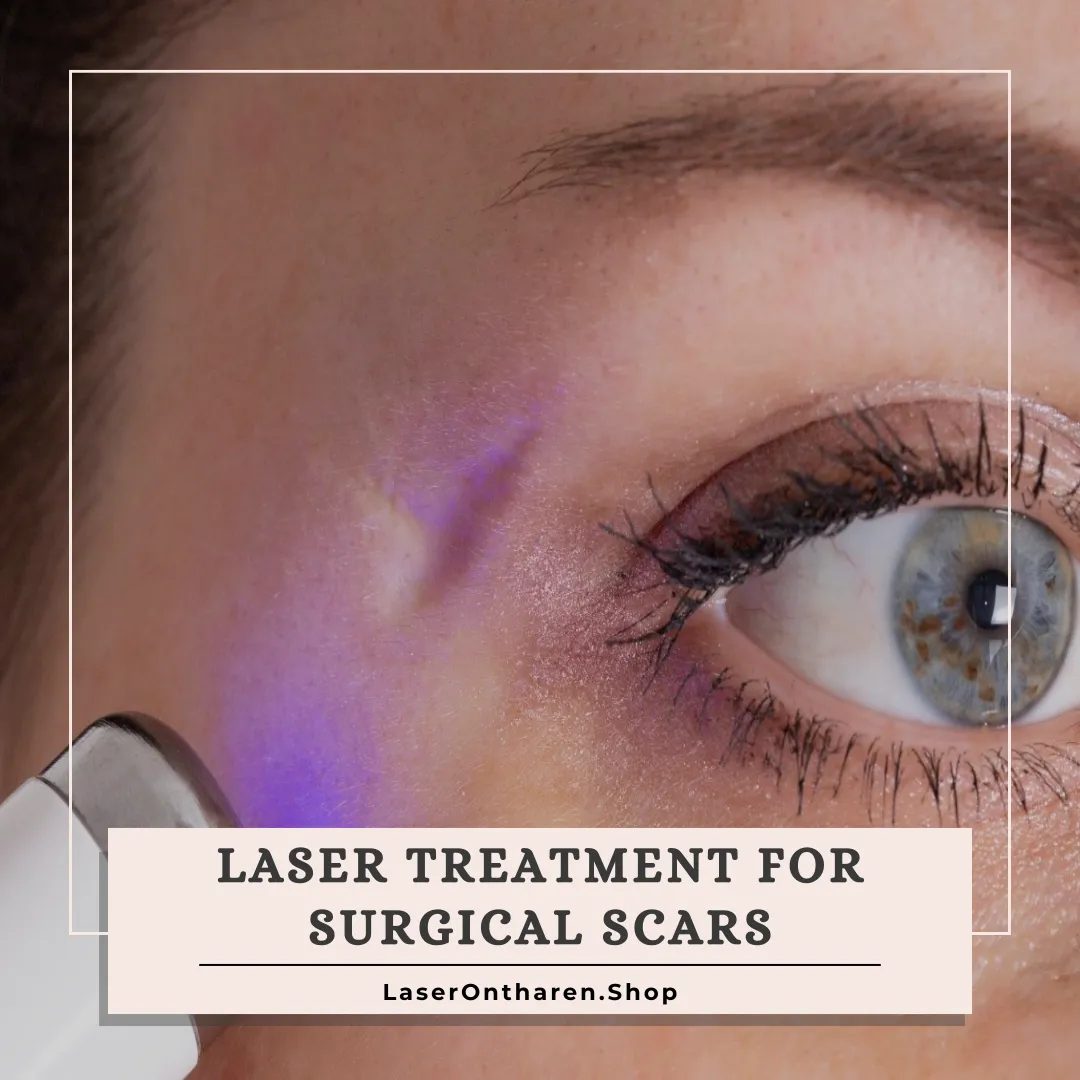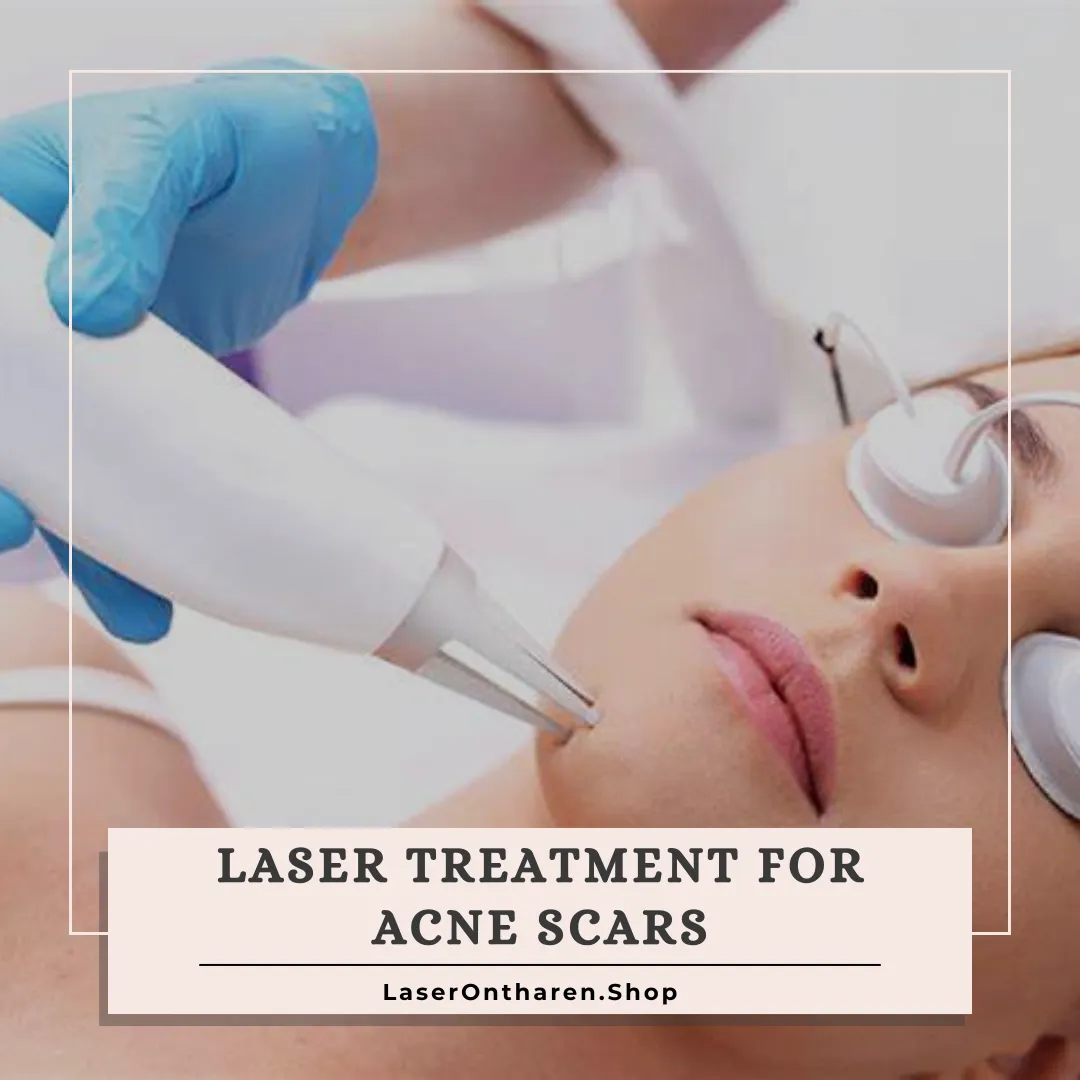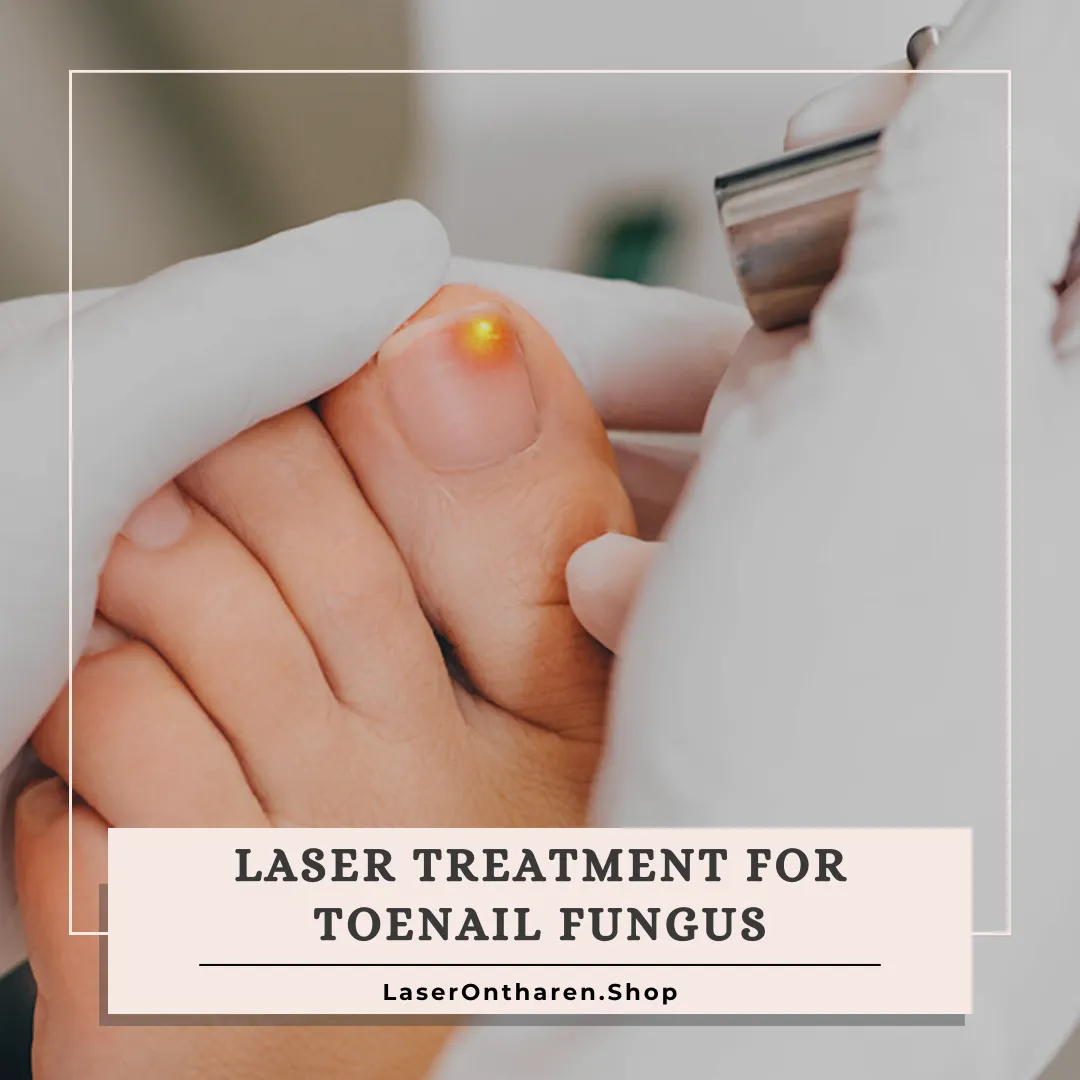What is CO2 Laser Treatment?
CO2 laser treatment, also known as carbon dioxide laser resurfacing, is a cutting-edge dermatological procedure designed to improve skin texture and appearance.
By utilizing a high-energy beam of carbon dioxide laser light, this treatment precisely removes layers of damaged skin, promoting the growth of new, healthy skin.
Commonly used for skin rejuvenation, the CO2 laser is highly effective in treating wrinkles, scars, sun damage, and various skin irregularities.
Its ability to stimulate collagen production makes it a popular choice for those seeking long-lasting improvements in skin firmness and elasticity.
- Warning
Before undergoing any laser treatment, it’s essential to consult with a qualified dermatologist or cosmetic surgeon who can assess your specific concerns and recommend the most appropriate treatment for your skin type and condition.
They can also provide information about the potential risks, benefits, and expected outcomes of the procedure.
Cost of CO2 Laser Treatment
The cost of CO2 laser treatment can vary significantly based on several factors, including the geographic location of the clinic, the experience and reputation of the practitioner, and the extent of the treatment area.
On average, patients can expect to pay between $2,000 and $5,000 per session. Some complex or extensive procedures may cost even more.
It’s important to note that because CO2 laser treatment is often considered a cosmetic procedure, it is typically not covered by insurance.
Therefore, patients should discuss all associated costs with their provider and explore available financing options if needed.
CO2 Laser Treatment Near Me
Finding a qualified provider for CO2 laser treatment near you is crucial for achieving safe and effective results.
Here are key steps to consider:
- Research Credentials: Look for board-certified dermatologists or plastic surgeons with extensive CO2 laser experience. Verify their certifications.
- Read Reviews: Check patient reviews on sites like RealSelf, Yelp, and Google Reviews for insights into care quality and results.
- Consultations: Schedule consultations with multiple providers to discuss goals, ask questions, and evaluate their approach.
- Clinic Visit: Assess the clinic’s environment and staff professionalism. Look for well-maintained facilities with state-of-the-art equipment.
- Ask About Technology: Ensure the use of the latest CO2 laser technology for improved safety and effectiveness.
By following these steps, you can find a reputable provider and achieve the best outcomes for your skin rejuvenation goals.
- +31623800046
- info@laserontharen.shop
Risks and Side Effects of CO2 Laser Treatment
CO2 laser treatment is generally safe when performed by a qualified professional, but like any medical procedure, it carries potential risks and side effects.
Understanding these risks can help you make an informed decision.
Common Side Effects:
- Redness and Swelling: It is normal to experience redness and swelling in the treated area, which can last from a few days to several weeks, depending on the depth and extent of the treatment.
- Itching and Discomfort: Some patients report itching, stinging, or discomfort as the skin heals.
- Peeling and Crusting: The treated skin may peel or form crusts as it regenerates.
Potential Risks:
- Infection: Although rare, there is a risk of infection if the treated area is not properly cared for during the healing process. Your provider will give specific aftercare instructions to minimize this risk.
- Scarring: There is a small risk of scarring, particularly if the treated area is not properly cared for or if the patient has a history of keloids or hypertrophic scarring.
- Changes in Skin Pigmentation: Some patients may experience hyperpigmentation (darkening of the skin) or hypopigmentation (lightening of the skin). These changes can be temporary or, in rare cases, permanent.
- Prolonged Redness: In some cases, redness can persist for several months after treatment.
- Acne Flare-Ups: The use of ointments and dressings after the procedure may trigger acne in some individuals.
Minimizing Risks:
- Choose a Qualified Provider: Ensure your provider is experienced and qualified to perform CO2 laser treatments.
- Follow Aftercare Instructions: Adhering to aftercare instructions is crucial to minimize risks and promote optimal healing.
- Protect Your Skin: Avoid sun exposure and use sunscreen diligently to protect the treated skin and prevent pigmentation changes.
By being aware of the potential risks and side effects, and by choosing a qualified provider, you can significantly reduce the likelihood of complications and enjoy the benefits of CO2 laser treatment.
Best CO2 Laser Treatment
To achieve the best results with CO2 laser treatment, consider these key factors:
- Experienced Provider: Choose a board-certified dermatologist or plastic surgeon with extensive CO2 laser experience to tailor the treatment to your skin type and concerns.
- Advanced Technology: Look for providers using the latest CO2 laser technology, such as fractional CO2 lasers, for greater precision, faster healing, and reduced downtime.
- Comprehensive Consultation: Ensure a thorough consultation that includes a detailed skin assessment, discussion of goals, and a personalized treatment plan.
- Customized Treatment Plan: Treatments should be customized to address your unique skin concerns, possibly combining CO2 laser with other treatments.
- Quality Aftercare: Follow detailed aftercare instructions and attend follow-up appointments to monitor healing and address concerns.
- Patient Reviews and Before-and-After Photos: Review these to gauge the provider’s capabilities and patient satisfaction.
- Safe and Clean Environment: Ensure the clinic maintains high standards of cleanliness and hygiene.
By considering these factors, you can receive the best possible CO2 laser treatment, leading to optimal skin rejuvenation and satisfaction with your results.
CO2 Laser Treatment Procedure
The CO2 laser treatment procedure involves several steps, from initial consultation to post-treatment care. Here’s a detailed look at what to expect:
1. Consultation:
- During the consultation, the provider will evaluate your skin type and concerns, discuss your medical history, and determine if CO2 laser treatment is appropriate for you. They will also explain the procedure, potential risks, and expected outcomes.
2. Preparation:
- Pre-Treatment Instructions: You may be advised to avoid sun exposure, stop certain medications, and use specific skincare products in the weeks leading up to the treatment.
- Anesthesia: Depending on the treatment’s extent, a topical anesthetic, local anesthesia, or sedation may be administered to ensure your comfort during the procedure.
3. The Procedure:
- Cleansing: The treatment area will be thoroughly cleansed to remove any dirt, oil, or makeup.
- Laser Application: The provider will use a CO2 laser device to deliver precise pulses of laser energy to the skin. The laser vaporizes the outer layers of damaged skin, promoting the regeneration of new skin cells and stimulating collagen production. The procedure can take anywhere from 30 minutes to two hours, depending on the size and number of areas treated.
- Cooling and Protection: After the laser treatment, the provider may apply cooling agents or protective ointments to soothe the skin and promote healing.
4. Post-Treatment Care:
- Immediate Aftercare: You may experience redness, swelling, and a sensation similar to a sunburn immediately after the procedure. Cold compresses and prescribed ointments can help alleviate discomfort.
- Healing Process: Over the next several days, the treated skin will begin to peel and flake as new skin cells emerge. It’s crucial to avoid picking or scratching the treated area to prevent scarring and infection.
- Sun Protection: Protecting your skin from the sun is essential. Use a broad-spectrum sunscreen with SPF 30 or higher, wear protective clothing, and avoid direct sun exposure.
- Follow-Up Appointments: Your provider will schedule follow-up visits to monitor your healing progress and address any concerns.
5. Recovery Timeline:
- The recovery time can vary depending on the depth and extent of the treatment. Mild treatments may heal within a week, while more intensive treatments can take up to two weeks or longer. Redness may persist for several weeks but will gradually fade as the skin heals.
6. Results:
- As your skin heals, you will notice improvements in texture, tone, and overall appearance. The full benefits of CO2 laser treatment become more evident over the following months as collagen production continues to enhance skin firmness and elasticity.
Understanding the CO2 laser treatment procedure helps set realistic expectations and ensures you are well-prepared for each stage of the process.
CO2 Laser Treatment for Skin Rejuvenation
CO2 laser treatment is renowned for its ability to rejuvenate the skin by addressing a variety of concerns.
It effectively reduces wrinkles and fine lines, improves skin texture, and minimizes scars.
The laser works by removing damaged skin layers and stimulating collagen production, which tightens and firms the skin.
It also helps correct pigmentation issues, such as sun damage and age spots, resulting in a more even skin tone.
The overall effect is a fresher, more radiant complexion with long-lasting results, especially when combined with proper skincare and sun protection.
CO2 Laser Treatment Before and After Pictures
Before and after pictures of CO2 laser treatment provide a visual representation of the procedure’s effectiveness.
When considering CO2 laser treatment, ask your provider to share before and after photos of their patients to better visualize the potential benefits for your skin.
- +31623800046
- info@laserontharen.shop
Preparation Before CO2 Laser Treatment
Proper preparation is essential for a successful CO2 laser treatment and optimal results. Here are key steps to follow before undergoing the procedure:
- Consultation with Your Provider
- Avoid Sun Exposure
- Discontinue Certain Medications
- Skincare Regimen
- Avoid Other Skin Treatments
- Plan for Recovery
By following these preparation steps, you can help ensure a smoother treatment experience and better outcomes from your CO2 laser procedure.
Recovery and Aftercare for CO2 Laser Treatment
Proper aftercare is essential for optimal healing and results after CO2 laser treatment. Here’s a summary of key steps:
Immediate Care:
- Expect redness and swelling for a few days to weeks; use cold compresses and healing ointments as recommended.
- Gently clean the treated area with a mild cleanser and lukewarm water, then pat dry.
Sun Protection:
- Avoid sun exposure; when outside, use a broad-spectrum sunscreen (SPF 30+), wear a hat, and protective clothing.
Skin Care:
- Do not pick or scratch the treated skin to prevent scarring and infection.
- Attend follow-up appointments to monitor healing.
Long-Term Care:
- Use daily sunscreen to protect new skin and maintain results.
- Follow your provider’s skincare regimen for ongoing skin health.
Recovery Timeline:
- First Few Days: Redness, swelling, sunburn-like sensation.
- First Week: Peeling and flaking.
- 2-3 Weeks: Continued healing, fading redness.
- 1-3 Months: Full results as collagen production enhances skin.
Following these steps ensures a smooth recovery and maximizes the benefits of your CO2 laser treatment.
Pros and Cons of CO2 Laser Treatment
Pros:
- Effective Results: CO2 laser treatment provides significant improvements in skin texture, tone, and appearance by reducing wrinkles, scars, and pigmentation issues.
- Collagen Stimulation: Promotes long-term skin health by stimulating collagen production, leading to firmer and more elastic skin.
- Precision: Allows for targeted treatment with minimal damage to surrounding tissues, making it suitable for delicate areas.
- Versatility: Can treat a variety of skin conditions, including sun damage, age spots, and acne scars.
Cons:
- Downtime: Recovery can take several days to weeks, with redness, swelling, and peeling common during this period.
- Cost: The procedure can be expensive, and multiple sessions may be required for optimal results.
- Potential Side Effects: Includes redness, swelling, infection, scarring, and changes in skin pigmentation, which can be temporary or permanent.
- Not Suitable for All Skin Types: Individuals with darker skin tones may have a higher risk of pigmentation changes and should consult with a qualified provider to determine suitability.
By weighing these pros and cons, you can better understand whether CO2 laser treatment aligns with your skin goals and lifestyle.
- +31623800046
- info@laserontharen.shop
CO2 Laser Treatment Tips
To maximize the benefits of CO2 laser treatment and ensure a smooth recovery, consider these practical tips:
- Choose a Qualified Provider
- Follow Pre-Treatment Instructions
- Plan for Downtime
- Adhere to Aftercare Guidelines
- Stay Hydrated and Maintain a Healthy Diet
- Avoid Picking or Scratching
- Use Sunscreen Diligently
- Be Patient with Results
- Schedule Follow-Up Appointments
By following these tips, you can enhance the effectiveness of your CO2 laser treatment and enjoy a smoother recovery process.
Alternatives to CO2 Laser Treatment
While CO2 laser treatment is highly effective, there are several alternative treatments for those seeking different options based on their specific skin concerns, downtime preferences, and budget. Here are some common alternatives:
1. Fraxel Laser Treatment:
Fraxel lasers are fractional lasers that target a fraction of the skin at a time, promoting rapid healing. They are effective for treating wrinkles, acne scars, and pigmentation issues with less downtime compared to CO2 lasers.
2. Intense Pulsed Light (IPL):
IPL uses broad-spectrum light to treat pigmentation, sun damage, and vascular lesions. It is less invasive than CO2 laser and typically requires minimal downtime.
3. Chemical Peels:
Chemical peels involve applying a chemical solution to the skin to exfoliate and remove damaged layers. They can address wrinkles, scars, and pigmentation issues. Peels vary in strength, from mild (superficial peels) to deep peels with more significant results and downtime.
4. Microneedling:
Microneedling uses fine needles to create micro-injuries in the skin, stimulating collagen production. It is effective for improving skin texture, reducing scars, and fine lines with minimal downtime.
5. Radiofrequency (RF) Treatments:
RF treatments use radiofrequency energy to heat the deeper layers of the skin, stimulating collagen production and tightening the skin. They are non-invasive and have minimal downtime, suitable for skin tightening and wrinkle reduction.
6. Non-Ablative Laser Treatments:
Non-ablative lasers, such as Nd:YAG and diode lasers, penetrate the skin without removing layers. They stimulate collagen production and improve skin texture with minimal downtime.
7. Dermabrasion:
Dermabrasion involves mechanically exfoliating the skin’s outer layers to treat scars, wrinkles, and pigmentation issues. It requires more downtime compared to non-invasive treatments but can yield significant results.
8. Topical Treatments:
Prescription creams and serums containing retinoids, peptides, and antioxidants can improve skin texture and reduce signs of aging. These are non-invasive and have no downtime but may take longer to show results.
CO2 Laser Treatment for Different Skin Types
CO2 laser treatment can be customized for various skin types, but different skin tones may respond differently:
- Fair Skin (Types I and II): Generally respond well with fewer risks of pigmentation changes.
- Medium Skin (Types III and IV): Effective, but there is a higher risk of pigmentation changes. Proper care is crucial.
- Dark Skin (Types V and VI): Higher risk of pigmentation issues and scarring. Requires an experienced provider and possibly lower settings or alternative treatments.
Customization and Care:
- Test Spots: Used to predict skin reaction.
- Pre-Treatment Regimen: Lightening agents may be recommended.
- Lower Settings: Safer for medium to dark skin tones.
Strict post-treatment care, including using prescribed ointments and avoiding sun exposure, is essential for all skin types.
CO2 Laser Treatment for Specific Skin Conditions
CO2 laser treatment is effective for addressing a variety of specific skin conditions, providing targeted solutions and significant improvements:
1. Acne Scars:
CO2 laser treatment can reduce the appearance of acne scars by removing the damaged skin layers and stimulating collagen production, which helps to smooth out the skin.
2. Wrinkles and Fine Lines:
The laser precisely removes the outer skin layers, reducing fine lines and deeper wrinkles. It also promotes new collagen formation, which tightens and firms the skin.
3. Sun Damage:
CO2 laser treatment can effectively treat sun damage, including sunspots and hyperpigmentation. It removes the pigmented layers and promotes the growth of new, healthier skin.
4. Surgical and Trauma Scars:
By resurfacing the scar tissue and encouraging collagen production, CO2 laser treatment can improve the texture and appearance of surgical and trauma scars.
Conditions like melasma and age spots can be addressed with CO2 laser treatment. The laser targets and breaks down excess pigment, resulting in a more even skin tone.
6. Skin Laxity:
The treatment tightens loose or sagging skin by promoting collagen and elastin production, providing a firmer and more youthful appearance.
Conclusion: CO2 laser treatment is a versatile and powerful option for treating specific skin conditions, offering substantial improvements through precise skin resurfacing and collagen stimulation.
Well-Known Brands for CO2 Laser Treatment
When considering CO2 laser treatment, it’s helpful to know some of the well-known and trusted brands that offer advanced CO2 laser systems.
These brands are recognized for their innovative technology and effectiveness in skin resurfacing and rejuvenation:
1. Fraxel Re:pair:
Fraxel Re:pair is a popular fractional CO2 laser that targets damaged skin with precision, promoting rapid healing and reduced downtime. It’s widely used for treating wrinkles, scars, and pigmentation issues.
2. Lumenis UltraPulse:
The Lumenis UltraPulse CO2 laser is known for its versatility and powerful performance. It offers deep and precise skin resurfacing, making it effective for severe wrinkles, deep scars, and skin tightening.
3. DEKA SmartXide DOT:
The DEKA SmartXide DOT laser system uses fractional CO2 technology to provide customized treatments. It’s effective for fine lines, deep wrinkles, acne scars, and skin rejuvenation with controlled recovery times.
4. Alma Pixel CO2:
The Alma Pixel CO2 laser system combines fractional and ablative laser technology to deliver effective skin resurfacing with minimal downtime. It’s suitable for a range of skin concerns, including scars and pigmentation issues.
5. Candela CO2RE:
The Candela CO2RE system offers multiple treatment modes for superficial and deep resurfacing. It’s designed to treat wrinkles, scars, and skin tone irregularities with precision and customizable settings.
Choosing a CO2 laser treatment from a well-known and reputable brand ensures access to advanced technology and effective results. Consult with your provider to determine which laser system is best suited for your specific skin needs and goals.
- +31623800046
- info@laserontharen.shop
Why CO2 Laser Treatment Is the Best?
CO2 laser treatment is highly regarded for skin rejuvenation due to its effectiveness in improving skin texture, reducing wrinkles, scars, and pigmentation issues.
Its precision allows for targeted treatment with minimal impact on surrounding tissues. The procedure stimulates collagen production, leading to firmer, more elastic skin over time.
It’s versatile, addressing a wide range of skin concerns, and offers long-lasting results, especially when combined with proper skincare.
Advanced fractional technology also reduces downtime, making CO2 laser treatment a comprehensive and convenient solution for various skin issues.
Conclusion
CO2 laser treatment is a powerful and versatile tool for skin rejuvenation, offering significant improvements in skin texture, tone, and overall appearance.
It effectively addresses wrinkles, scars, pigmentation issues, and sun damage, making it a comprehensive solution for various skin concerns.
With its precision, ability to stimulate collagen production, and long-lasting results, CO2 laser treatment stands out as one of the best options for achieving youthful, radiant skin.
Consulting with a qualified provider and following proper pre- and post-treatment care ensures safe and optimal outcomes.

